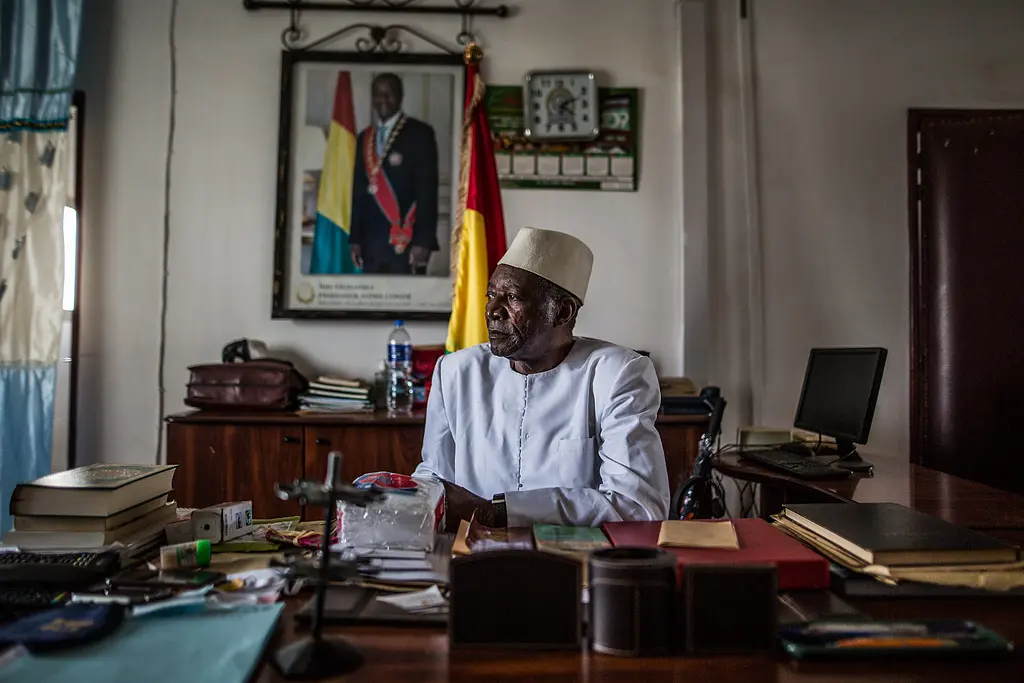How Can PEA Contribute to ‘Thinking and Working Politically’ in Development?
We sat down with Evaluation and Learning Specialist Sarah Miller Frazer, and co-author of the recently published study Thinking and working politically: Lessons from diverse and inclusive applied political economy analysis to learn more about this publication and how political economy analysis (PEA) can contribute to a “thinking and working politically” (TWP) mindset and provide a holistic way to implement development programs more effectively.
Ms. Frazer also recently presented at the Society for International Development-Washington event: Practicing Thinking and Working Politically: Voices from the Field. The recording is available here.
Q: What is PEA and how does it connect to TWP?
A: PEA is a methodology for assessing context, systems, and relationships. It seeks to look beneath the surface--at how power and resources are distributed and contested, with the goal of informing development programming and improving the effectiveness of aid.
PEA methods and tools have grown and been adapted over the last 40 years through innovations by donor agencies and international development practitioners. A PEA helps you to understand why you are experiencing roadblocks or challenges or seeing certain results (or not). In our projects, we use PEA to look deeper at underlying context, relationships, challenges, and opportunities that aren’t immediately visible or understood.
Thinking and working politically (TWP) is an approach to working in a more politically aware way. It is a way of thinking about development programs and their implementation in a way that takes into account the influence of power and politics and works to align the interests of the various stakeholders. The goal of TWP is to have a better contextual understanding that supports more effective interventions. PEA is one of the tools in our toolbox to embed TWP into project implementation. Applying the insights and resulting actions from a PEA is a practical approach to TWP, which contributes to better outcomes.
Q: Can you describe RTI’s recent research study on PEAs?
A: My colleagues Lisa McGregor, Derick Brinkerhoff and I recently published a research study that sought to investigate what works for effective PEA in practice. We looked at different variations of PEA in several countries, to answer the following questions:
- In which situations does one PEA approach work versus another?
- How can PEA usefully inform learning and adaptation?
- What is the path from applied PEA to TWP?
The nine PEAs—implemented by RTI between 2017 and 2019—were conducted in seven different countries: Haiti, Nigeria, Philippines, Senegal, Tanzania, Uganda, and Zambia and four sectors: governance, water and sanitation, wildlife conservation, and higher education.
Using a combination of document review and key informant interviews we analyzed the topics of the PEAs, how they were carried out, what factors influenced their success, where challenges arose, and their value to implementation teams in the field.
Q: What were the main findings from your study?
A: Based on these nine PEAs, we traced some preliminary patterns across the cases. I’ll mention them briefly here, but I encourage everyone to check out our publication where we explain these findings in greater detail and include specific program examples that illustrate the findings.
PEAs make positive contributions to technical interventions. In all nine cases, the PEAs either revealed new information that influenced strategy and activities, or helped teams design effective responses given existing information.
Engaging project staff in PEAs increases the likelihood of TWP. We found that having an external team of consultants do a PEA for a program is not an effective approach to connecting a PEA to TWP behaviors. Bringing project staff in as team members builds skills in stakeholder mapping, identifying underlying power dynamics and incentives, and reveals hidden social inclusion factors.
Explicitly connecting PEA findings to project implementation facilitates adaptive management. It can be difficult to convert PEA insights and findings into politically aware/sensitive action plans, as well as implement those actions and track progress and results. We found that taking the time and effort to reflect on PEA findings and explicitly incorporating them into revised project work plans is important for adaptation to local systems and improves results.
Inclusion of gender equity and social inclusion (GESI) in PEAs helps to uncover and address hidden power dynamics Five of the nine PEAs we studied explicitly included GESI. When GESI was not included in PEA processes, the findings missed some of the key underlying issues preventing successful outcomes. Given our research, RTI is now including a GESI component as an essential part of our PEA methodology.
Q: Were there any lessons learned that RTI plans to incorporate into future PEAs?
A: Yes, we identified some key lessons learned from our experience and are learning from our successes, challenges, and adaptations in conducting PEAs.
Timing: Consider PEA timing carefully
The timing of a PEA has an impact on how results can be used most effectively. Early in project start-up facilitates inclusion of results in work plans and can lead to early successes. Mid-project (e.g., as part of Collaborating, Learning, and Adapting reviews) facilitates mid-course corrections. Toward the end of a project means that the PEA findings will be most useful as input to planning for a follow-on project.
Composition: Consider the political economy of the PEA team
Members of PEA teams have their own interests, relationships, and disciplinary lenses, which can influence the outcome of a PEA. In one of our cases, one of the team members had ambitions for running for elected office and was reluctant to report on findings that he felt would be politically sensitive—something that we only found out after the PEA was completed.
Workload: Recognize workload burden on field staff
We noted the benefits of engaging local staff in conducting PEAs, but there are costs to them as well in terms of added workload. Implementation responsibilities remain for staff who participate in PEA. It can be helpful to look for ways to include PEA questions in ongoing project activities—this aligns with what are called “everyday PEAs” or iterative PEA, another approach to embedding TWP into a project.
Logistics: Don't forget the basics
Like any field-based data collection exercise, PEA success depends on good logistical planning. This includes interview scheduling, travel arrangements, and planning sufficient time for team synthesis and discussion at the close of data gathering to ensure that effective analysis and action planning result from the PEA.
Optimism: Start on a positive note
The orientation of many PEAs is on surfacing obstacles and constraints, and these are certainly important to identify. However, we found that thinking of the implementation space with a more positive “glass half full” mindset can lay the foundation that the aim of the PEA is to identify what is working as well as where challenges lie.. This positive orientation can encourage project staff to openly discuss difficulties and offer suggestions for solutions.
Q: Any final thoughts you want to share?
A: I want to leave you with a quote from a water engineer and RTI staff team leader in Nigeria, that showcases the utility of a PEA in seeding TWP.
The PEA process showed us that improving the water utility was about much more than pumps and pipes. Now I won’t hit my head against the wall when I see a political economy issue. I now have an approach to identify the underlying issues and find potential solutions.

